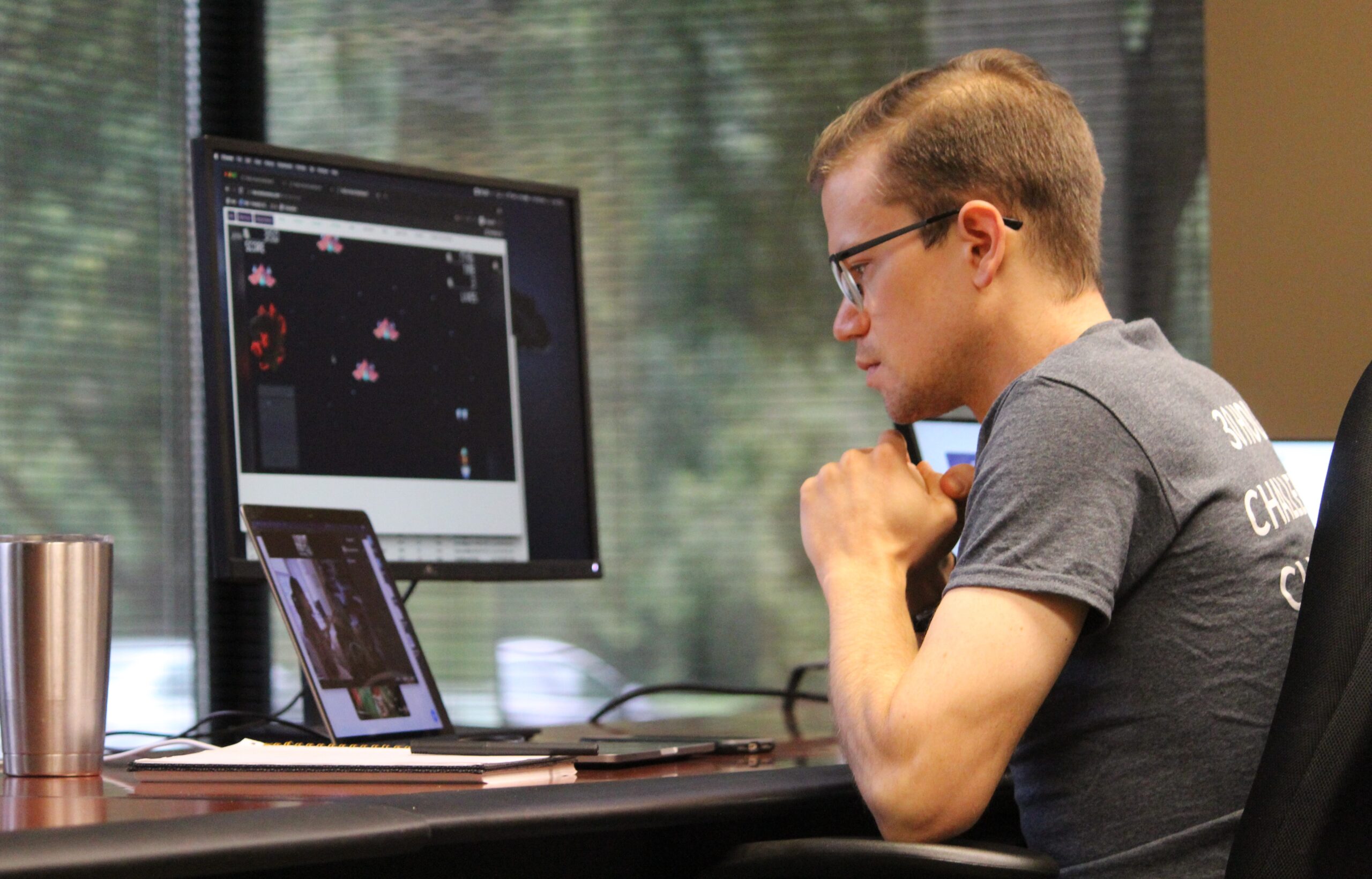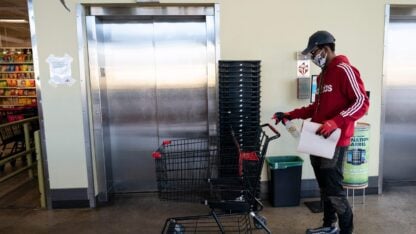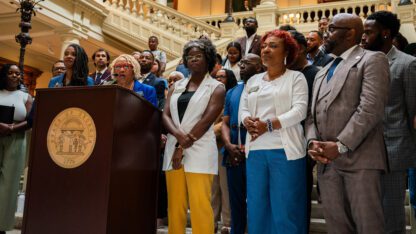Atlanta company turns to technology to accelerate recovery from brain injuries

Nick Housley conducts a remote therapy session with Mak Yost, a stroke survivor working to recover the use of one of his hands.
Emil Moffatt / WABE
Three years ago, Mak Yost, a high school athlete in Smyrna, suffered a stroke that affected his ability to walk and speak. His mom Faye says it also meant his right hand was often clinched in a tight fist.
“If you threw a ball at him right now, he would catch it with his right hand. But he can’t let go of it,” she said. “So that’s kind of where we’re at right now, trying to figure out how to train his brain to release.”
They tried keeping his hand in a splint, but it didn’t work and it was painful. So they turned to a combination of injections to relax the muscles, and a new at-home approach to physical therapy using devices built by an Atlanta company, Motus Nova.
For this therapy, Mak sits in his living room with his hand in a glove-like device called Motus Hand, which has sensors and is connected to the internet. Meanwhile, Nick Housley, the company’s director of clinical research, is perched in front of a computer screen at his office in Atlanta.
“On my side, I’m able to see the data come through, and we can switch over to the video here and see that Mak has got some really nice movement on that side,” he explained. Housley earned a doctorate in physical therapy at Georgia State after a traumatic brain injury ended his cycling career.
With a click of a mouse, Housley can also control how much resistance the Motus Hand gives. Yost says her son plays the interactive games using the device for at least an hour every day. Housley says this can lead to faster progress.
“Some of the best studies that have ever been done on this, identify that we need between 400 to 600 repetitions of movement a day to cause a meaningful change in the brain,” he said. “And this is in stark contrast to what is delivered in the classic clinic-based approach.”
Because the therapy is done at home, Mak’s mom Faye says it keeps her from having to drive him to appointments.
“This thing has saved my life as far as just driving around Atlanta trying to get to therapy. It would eat up our day and we’d get nothing else done,” she said. Even though the Yosts live in Metro Atlanta, distance from a physical therapist can often present an obstacle to access for those who live farther away in rural areas.

Connectivity
Motus Nova’s CEO, David Wu says the technology isn’t designed to eliminate in-person therapy, but to give physical therapists time to treat more patients.
“Really, we think of it as a workforce multiplier, where the robot is there do to all the repetitive, time-consuming elements of healthcare,” said Wu.
At the moment, the company’s devices are in about 2,000 homes The equipment isn’t covered by insurance yet, but it’s part of a growing trend of robotics in health care.
Wu says if the patient doesn’t have an internet connection, the device can still work with information transferred through the mail via a USB device. But he says the device is most effective with regular real-time interactions between therapist and patient.
“With the increase in connectivity in the rural areas, that’s going to enable technologies that have that face-to-face interaction, said Wu. “Sometimes that’s extremely important just for a user or patient to be told, ‘hey, you’re doing great.’”








